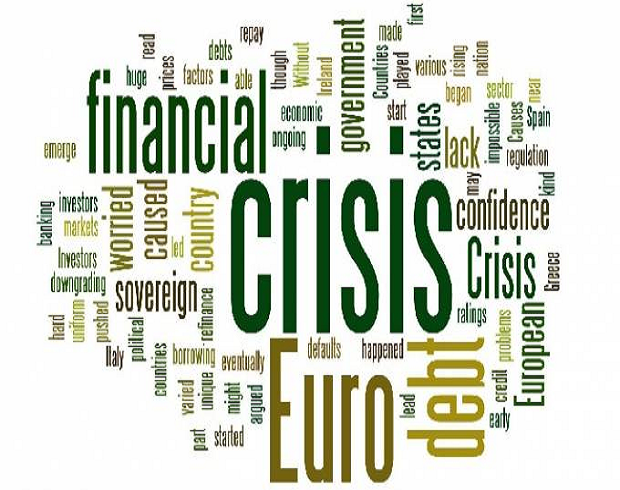[vc_row][vc_column width=”2/3″][vc_column_text]A few weeks ago, I quoted extensively from a speech given by the former Nigerian Central Bank Governor, Lamido Sanusi, in February 2010 where he was explaining, with painful honesty what had gone wrong in the Nigerian banking industry following the global financial crisis which impacted the Nigerian economy hard. He could have been describing the Kenyan industry in many ways. Do we have a problem in Africa? Do we have a problem distinguishing customer deposits, from revenue? And further, distinguishing revenue from profits? The fact is that banks have only one product: cold, hard cash. That’s all that they deal with, and therefore a great responsibility is placed upon them as that cash, with the exception of the capital that shareholders put in, is largely from our pockets. Our sweat, blood and tears in the form of salaries, business revenues and savings is what we place in the hands of total strangers, believing with every fibre of our native beings that they will make it available to us as and when we need it. We trust that the management of these banks will make the distinction between what belongs to us and what belongs to them. A distinction that is clearly difficult to make once a rogue management crosses to the dark side. Sanusi explains the Nigerian experience thus:
“The original title of this paper was “Transformative Disruption: Relocating theNigerian Banking Crisis from the Economic to the Social.” The choice of title
was informed by a strong desire to articulate a correct narrative, in an
environment in which we are confronted by a multi-vocal opportunism
determined to subvert history through the fabrication of false narratives.
Among these, is the assertion that the actions taken by the Central bank are
part of a grandiose “northern” agenda against southern Nigeria. Or that
perhaps it is an “Islamic” agenda being pushed by a Muslim fundamentalist.
There are also other subtler and more sophisticated-albeit just as
opportunistic-narratives. For example the new claim by public officers and
politicians that there is really no corruption in the public service, that
politicians are not corrupt, and that the real corruption is only in banks.
What we have done in the Central bank, is to fire the opening salvo in what could potentially be a revolutionary battle against the nexus of money and influence that has held this country to ransom for decades. This would not be the first time banks
collapse nor are brought to the brink in our national history. And it will certainly
not be the last. But this time there is a difference.
In previous crises we said some banks had failed a passive and complicit
phrase that masked a gross irresponsibility and crass insensitivity. “The bankhas failed”.
……And that is exactly what happens when we refer to “failed banks” as if the
bank itself, some impersonal structure made up of branches and computers,
somehow collapsed on its own. By using-or abusing- the term “failed bank” we
are able to mask what is almost always a monumental fraud. But it is a
deliberate act of prestidigitation. Thousands of poor people, who have kept their life savings in the bank, lose it. Children’s school fees, savings for retirement, medical bills, gone into thin air. And who is to blame? No one really. Or maybe the poor people who were foolish enough to keep their money in a bank that “failed”.
How many people have died of heart attacks due to this tragedy? How many
honest businessmen have been rendered bankrupt? How many people have
committed suicide? How many have died because they were unable to pay
medical bills as their monies were trapped in these institutions? How many
children have dropped out of school? We do not know. Because we live in a
society in which they do not matter. They are anonymous. They are poor.
What we do know is that we have today, among those parading themselves
as role models in society, people who profited from failed banks. Owners and
managers who go on to become governors and senators. Bad debtors who
are multi- billionaires, having taken the money belonging to those poor dead
souls and not paid back.
So here is the reality. The owners and managers of banks, the rich borrowers
and their clients in the political establishment are one and the same class of
people protecting their interest, and trampling underneath their feet the
interest of the poor with impunity.
So this time we turned the tables and said “enough is enough”. The banks did
not fail. They were destroyed and brought to their knees by acts committed by
identifiable people. Do not say that government money has been
stolen. Name the thief. And so, in keeping with that tradition, we did not say
that banks had failed. We named human beings-the management that stole
money in the name of borrowing, the gamblers that took depositors funds to
speculate on the stock market and manipulate share prices, the billionaires
and captains of industry whose wealth actually was money belonging to the
poor which they “borrowed” and refused to pay back.
Fortunately, the President, Umaru Musa Yar’Adua, understood from the first
day that this was an ideological choice we had to make. We could side with
the rich and powerful, and say the banks had failed. Or we could side with the
poor and save the banks but go after the criminals. And we chose the latter.”
That KCB has swung in to provide much needed stability in the wake of the Chase Bank fiasco is nothing short of a miracle pill engineered by Kenya’s Central Bank Governor. But this is not the time to exhale from a dodged bullet. There’s blood in the water and significant public goodwill to see the elite “financial accounting wizards” get what they deserve. A nice room with enough light that will allow them far more time to sit and reflect on the distinction between deposits, revenues and profits.
[email protected]
Twitter: @carolmusyoka[/vc_column_text][/vc_column][vc_column width=”1/3″][/vc_column][/vc_row]

 carolmusyoka consultancy
carolmusyoka consultancy
 @carolmusyoka
@carolmusyoka

